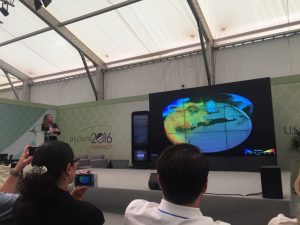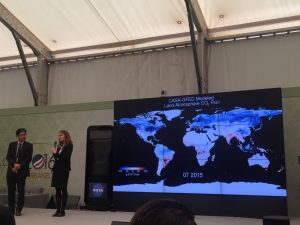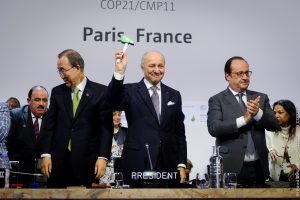After a few weeks back in the United States, I have had some time to think about COP22 and reflect. Like I said prior, I was not 100% sure what the result of the COP would be given the U.S. election and President-Elect Trump stating that climate change is a hoax created by the Chinese. Returning to my original blog post, I laid out four different scenarios that could occur.[1]
The options were:
- Business As Usual: countries acting the same and not changing their goals, assuming the Clean Power Plan and Economic Factors force the U.S. to keep its commitments.
- More Aggressive Action: China, Japan or the EU taking action to offset any changes from the U.S. in both CO2 reductions and global leadership.
- A Less Ambitious Agreement: Countries trying to make the Agreement more appealing to a Trump administration by decreasing the commitments from the U.S.
- Hitting Pause for 4 Years: Countries assume the U.S. will have no meaningful impact and will wait until the next administration to make any large-scale changes.
While it is too early to tell what will happen exactly, if I had to venture a best guess, it would be a combination of the first and second. During the COP the talking points by U.S. Government officials about the United States commitment to climate change had very little to do with the Clean Power Plan actually. More of it came from economic factors and sub-national actors.

Me at the U.S. Pavilion
Solar and wind power are booming in the United States right now. U.S. delegation members constantly reminded us that the U.S. employs over 2 million people in the solar industry versus 65,000 people in the coal industry, or that half of Wal-Mart’s energy supply came from renewables. In their eyes, renewable energies were the way of the future, regardless of what a Trump administration would do. Even if renewables do not do it, the explosion of natural gas would. Natural gas is not a perfect solution since it still emits CO2 and there are serious questions regarding methane leaks, but the current view is it is preferable to coal, in terms of climate mitigation, and is a good transitional fuel.
Adding to this, many of the U.S. regulations that reduce Co2 emissions would not likely be withdrawn in a Trump administration anyways. For example, fuel-economy standards in the automobile industry are unlikely to change. A drastic change like that could actually do more damage to the market since it has adopted to those regulations.
Additionally, the considerable efforts made to tackle climate change and enact energy saving mechanisms by American cities like New York or Chicago will definitely help lower CO2 emissions. California’s choice to create a carbon market would jump start a new type of economy as well.
These market shifts and sub-national actions may not be enough to keep the U.S. 100% on track with its commitments, but it definitely would get the U.S. to stay within range.
After attending different events and speaking to different delegations it seems that other countries are definitely willing to step up in terms of political leadership. At many different events, UN Secretariat members praised China’s leadership and action as well as Germany. If the U.S. withdraws from leading the discussions while fleshing out more of the details of the Paris Agreement, it seems very probable at this point that the EU or China will fill the political leadership void.
Lost U.S. leadership will be bad for U.S. interests. With a reduced U.S. role in the negotiations of the specific regulatory text, the outcome will be not as favorable to the U.S. and instead be more aligned with Chinese or European Goals. This is the tradeoff for having a reduced role in global leadership. The U.S. does not have to bear many of the costs, but the rules of the system are in the image of another country.
Regardless of the future of the U.S. global leadership role, the COP has given me renewed hope that climate change will be met by the global powers. The COP had a sense of momentum and a sense of energy that even the American election could not undermine. I, unfortunately, do not think we will meet our 1.5-degree target, and with a lower U.S. commitment, it will be hard to meet the backup 2-degree commitment. But there is a clear stopping point. Countries are beginning the preparation for a zero-carbon economy.
Even in an Age of Trump, nothing is impossible. If the global community continues this momentum and our generation continues to bring energy, this issue will be tackled and resolved in my lifetime. To this day, I still believe in President Obama’s famous credo, “Yes We Can.”


